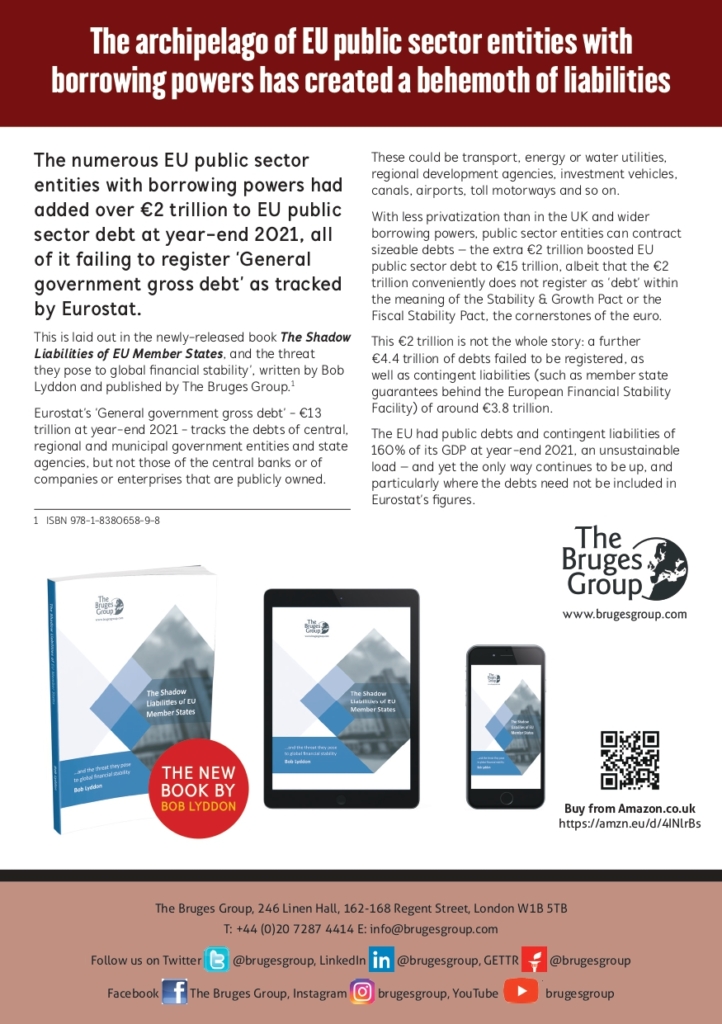Published on 26th May 2023
The EU member states contain numerous public sector entities with borrowing powers, and whose debts fall outside the definition of member state debt as reported by Eurostat. The responsibility for the debts tracks back, one way or another, to the member state but the amounts involved are opaque. All that can be said with complete certainty is that these debts are in addition to the already high level of direct member state indebtedness.
This is laid out in the newly-released book ‘The shadow liabilities of EU Member States, and the threat they pose to global financial stability’, written by Bob Lyddon and published by The Bruges Group.[1]
Eurostat tracks ‘General government gross debt’ – the debts of central, regional and municipal government entities and state agencies. This does not include the debts of the central bank or of companies or enterprises that are publicly owned. These could be transport, energy or water utilities, regional development agencies, investment vehicles, canals, airports, toll motorways and so on.
The degree of privatization in the EU is lower than in the UK, and the borrowing powers of public sector entities are less restrictive. These factors have created headroom for an area of considerable indebtedness.
Given that member states focus their debt strategy on compliance with the Stability & Growth Pact and the Fiscal Stability Pact – for which ‘General government gross debt’ is the marker – it is convenient to incur new debt within other public sector entities, and indeed to create new entities outside ‘General government’, have them indebt themselves, and then arrange for ‘General government’ entities to guarantee the debts. That keeps the debt out of Eurostat’s figures and exploits Eurostat’s inadequate capturing of the contingent liabilities as guarantor of ‘General government’ entities. The ultimate risk for repayment still falls on the member state.
Eurostat’s 2021 year-end figures were undermined to the extent that debts of around €6.4 trillion failed to be registered, and contingent liabilities of around €3.8 trillion.
The portion attributable to public sector entities outside the scope of ‘General government’ is extremely difficult to ascertain, although the loans made by the European Investment Bank (EIB) offer some guidance: the EIB’s prime purpose is to offer finance for infrastructure developments in the EU, and these are exactly the projects for which a public sector entity would be the borrower.
Based on that and other sources, it is reasonable to assume that the debts of EU public sector entities outside ‘General government’ were at least €2 trillion at the end of 2021, when Eurostat recorded the EU’s ‘General government gross debt’ as €13.0 trillion, which was already 90% of EU GDP of €14.5 trillion. The €2 trillion does not include another €1.2 trillion owed by the same entities through financing schemes like InvestEU where the debt is off-balance sheet.
The on-balance sheet debts of EU public sector entities outside ‘General government’ on their own raised the EU’s public sector debt from €13.0 trillion to €15.0 trillion, or from 90% to 103% of EU GDP…and the only way seems to be up, both on-and off-balance sheet.
[1] ISBN 978-1-8380658-9-8

